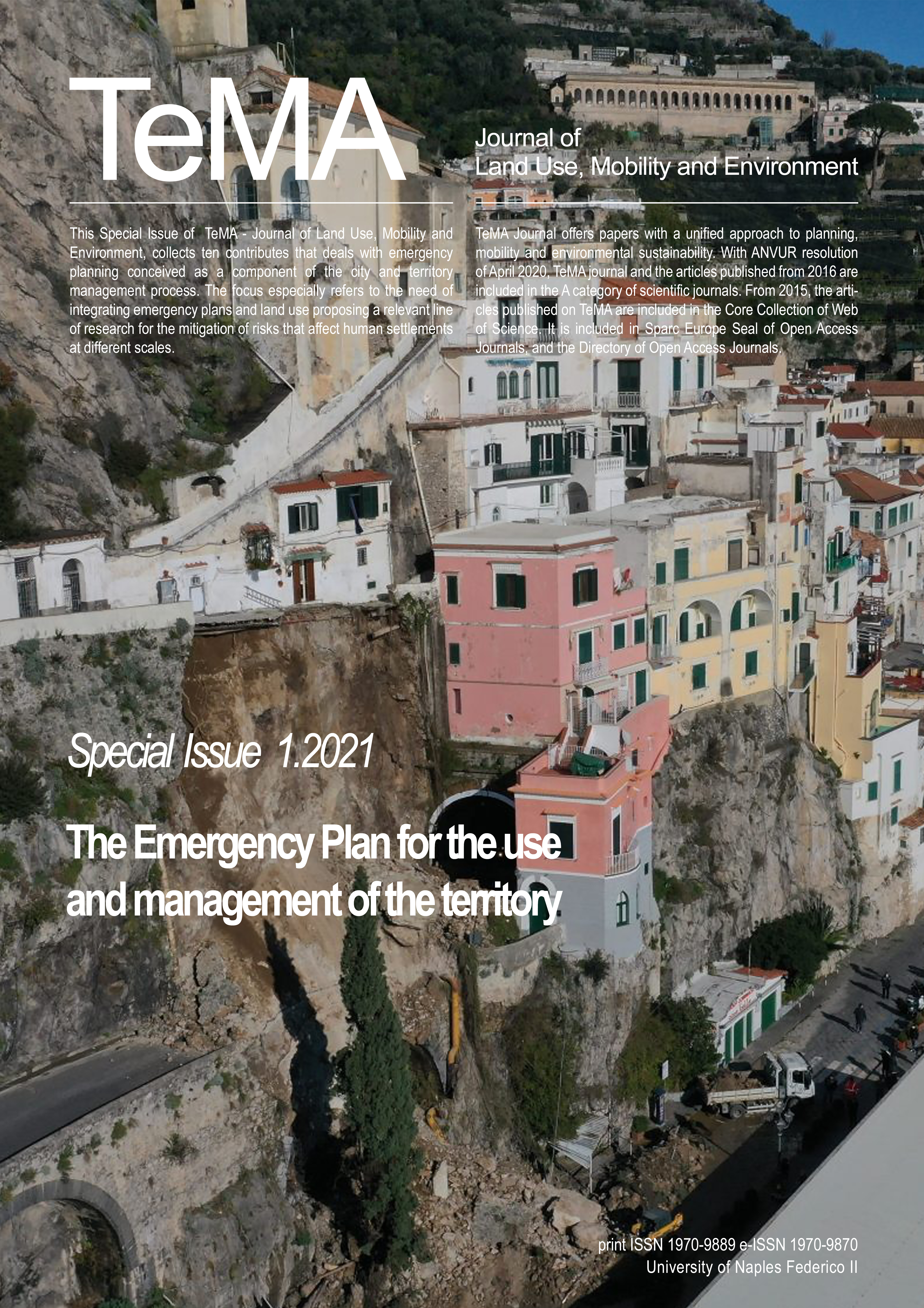Emergency and spatial planning towards cooperative approaches
Challenges and opportunities in the multi-risk area of Campi Flegrei
DOI:
https://doi.org/10.6093/1970-9870/7417Keywords:
emergency planning, spatial planning, multi-risk areasAbstract
The dependency of risk scenarios on the dynamics of urban transformation clearly highlights the need of ensuring a closer cooperation between spatial and emergency planning processes. So far the relationships between these processes have been rather limited, leading at most to the transposition of the emergency plans' indications in the spatial plans. Nevertheless, more cooperative approaches would be crucial to increase safety, resilience and sustainability of human settlements, above all when the latter are threatened by different hazard factors. In order to explore barriers and opportunities for a better cooperation between emergency and spatial planning tools, this contribution will focus on the Campi Flegrei in the Campania Region (Southern Italy): an area densely populated, hosting a significant historical, cultural, and natural heritage, and prone to volcanic, seismic and hydrogeological hazards. The case study area is also characteized by the coexistence of emergency and spatial planning tools acting on different spatial scales, developed by different actors and not always fully consistent each other. In detail, based on the in-depth analysis of the location and accessibility of emergency facilities, crucial to guarantee an effective response in the aftermath of hazardous events, we will here highlight both the main criticalities of the emergency plans recently carried out for the selected Municipalities and the difficulties and opportunities related to a better integration between spatial and emergency planning at municipal scale.
Downloads
Downloads
Published
How to Cite
Issue
Section
License
Authors who publish in this journal agree to the following:
1. Authors retain the rights to their work and give in to the journal the right of first publication of the work simultaneously licensed under a Creative Commons License - Attribution that allows others to share the work indicating the authorship and the initial publication in this journal.
2. Authors can adhere to other agreements of non-exclusive license for the distribution of the published version of the work (ex. To deposit it in an institutional repository or to publish it in a monography), provided to indicate that the document was first published in this journal.
3. Authors can distribute their work online (ex. In institutional repositories or in their website) prior to and during the submission process, as it can lead to productive exchanges and it can increase the quotations of the published work (See The Effect of Open Access)


